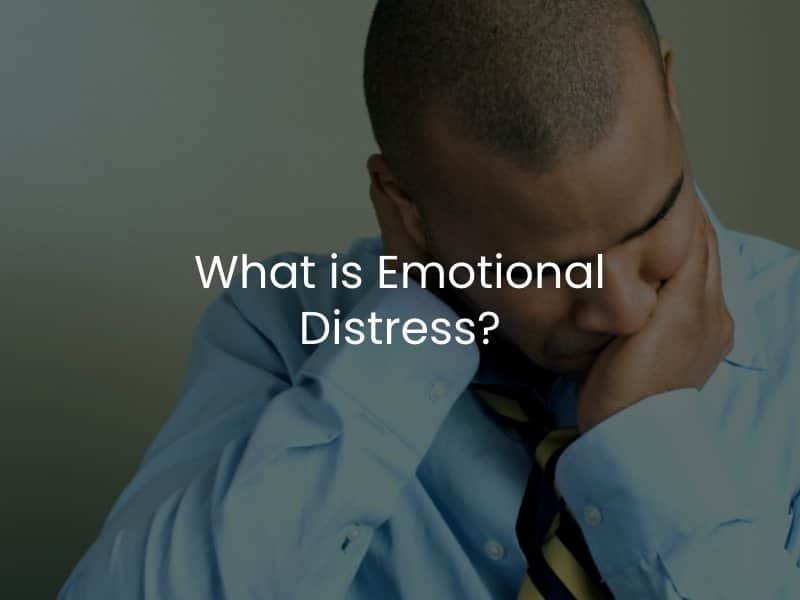What is Emotional Distress?
When a person sustains an injury caused by the careless or negligent actions of another individual, business, or entity, this can lead to significant setbacks in their life. First and foremost, physical injuries can lead to immense pain and suffering, long recovery periods, and cause a person to miss work.
However, what many people do not think about when they consider personal injury claims is the level of emotional distress the victim experiences along the way. Here, we want to define emotional distress in terms of personal injury claims and then look at some examples of how emotional distress may show up in a person’s life.

Defining Emotional Distress
When most people think of personal injury claims, they think of the physical injuries that a person suffers. However, nearly any type of personal injury can lead to some form of emotional distress. Legally speaking, emotional distress will be considered a non-economic damage when it comes to recovering compensation. Non-economic damages are more immeasurable, as there is no way to specifically calculate the level of a victim’s emotional suffering. Instead, these compensation amounts are based on how the emotional distress impacts a person’s life.
Examples of Emotional Distress in a Personal Injury Case
Emotional distress, as the name implies, revolves around an injury victim’s emotional response to the accident, their injuries, and the recovery process. This can include feelings of fear, anger, sadness, anxiety, grief, depression, and more. Some of the most common examples of emotional distress damages in a personal injury claim include the following:
- Loss of enjoyment of life
- Cognitive changes after a head or brain injury
- Diminished quality of life
- Distress caused by a disability
- Embarrassment or humiliation
- Psychological trauma
- Insomnia
- Continual anger or frustration
- Post-traumatic stress disorder (PTSD)
To give a brief example of how emotional distress could affect a person, we can look at someone who experiences significant facial scarring and disfigurement after a dog attack. This person may no longer feel comfortable going out in public because of the way their face looks. They may be embarrassed or humiliated, and this can, in turn, affect their mental state.
Additionally, what about a gymnast who sustains a spinal cord injury caused by a drunk driver? If that gymnast is no longer able to perform because they lost the ability to move their lower limbs, this will lead to a significant loss of enjoyment of life, a diminished quality of life, and likely significant internalized anger and frustration.
Proving Emotional Distress
It can be difficult to prove emotional distress damages after an injury occurs, particularly because emotional distress is not as visible as traumatic physical injuries. This makes a difference, especially when you are negotiating with insurance carriers or a legal team. In order to prove emotional distress, an injury victim will need to articulate how the incident has impacted their life. This can include personal testimony as well as testimony from friends and family members, especially those who knew the victim before the incident occurred, and can testify about how the victim’s life has changed since.